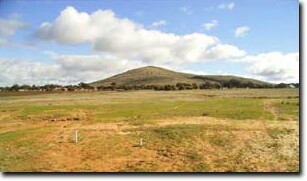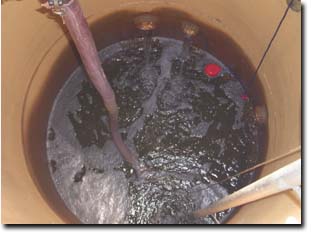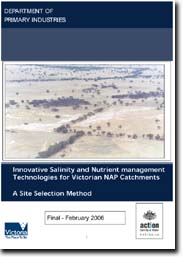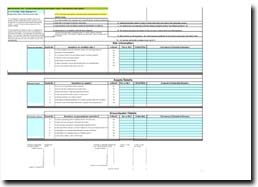Technical Solutions for Dryland Salinity
| Project Background Treating dryland salinity with plant-based solutions is a proven management option in many parts of Australia. However, there are potentially many locations where salinity and water quality problems require more urgent attention, for example where a significant environmental asset may be in decline or at risk. Revegetation may take several decades to reduce recharge enough to cause discharge area reduction. It is upon this premise that this study has sought to take forward the application of technical or innovative new solutions (primarily engineering based options) for the treatment of dryland salinity problem areas in Victorian NAP catchments. It has also sought to build on the previous work on engineering options for dryland salinity control carried out by Sinclair Knight Merz for the National Dryland Salinity Program. The underlying technical basis for extracting groundwater and diverting surface flows is well understood. What is not so well known is whether this underlying technical knowledge can be applied and form the basis for working systems in real catchment situations. |  |
 | Conclusions The major conclusion from this study is that Innovative Management Technology (IMT) options for Victorian Dryland Salinity (DLS) are not ‘silver bullets’ and may only be adopted in rare circumstances. Decisions on site and option suitability are commonly hamstrung by the following issues:
|
| Unexpected Outcomes This is not to say IMT solutions don’t still have a place; it just means that they are only likely to be suitable for a narrow range of DLS situations. The two most likely scenarios are:
Federal, state and regional NRM funding bodies should be very wary about investing money in technologically based solutions to solve salinity and water quality problems in dryland areas. While a technical approach to treating a salinity problem can usually be found, the costs of all the ancillary aspects will in most cases outweigh the benefits. For a complete discussion of the basis for these conclusions, please see the full report. |  |
This report "Innovative Salinity and Nutrient management Technologies for Victorian NAP Catchments - A Site Selection Method" is the final output from a Multi-regional NAP funded project that commenced in 2003 - 2004 financial year.
To view the information PDF requires the use of a PDF reader. This can be installed for free from the Adobe website (external link).
 |
National Action Plan - Innovative Management Technicologies Project - Site Selection Filter System
 |
Bruce Gill
Department of Primary Industries, Tatura
Email: bruce.gill@dpi.vic.gov.au
Phone; (03) 58 335 330


